Gardening is more than just a pastime — it’s a creative and therapeutic expression that enhances both outdoor and indoor spaces with vibrant colors, calming scents, and natural beauty. Among the most fulfilling aspects of gardening is flower planting, where each season offers unique opportunities to showcase different blooms. From the early blossoms of spring to the hardy colors of winter, understanding seasonal planting is essential for maintaining a garden that thrives year-round.
This in-depth Seasonal Flower Planting Guide provides everything you need to know about selecting the right flowers for every time of year. It covers the best flower varieties for spring, summer, fall, and winter, and includes detailed planting instructions, soil preparation tips, watering schedules, and climate considerations. You’ll also learn how to plan your garden layout for continuous blooms and stunning visual impact, no matter the season.
Whether you’re new to gardening or looking to refine your green thumb, this guide will serve as your go-to resource for cultivating a healthy, colorful, and low-maintenance flower garden. Get ready to transform your space and enjoy year-round beauty with expert advice tailored to both beginners and experienced gardeners alike.
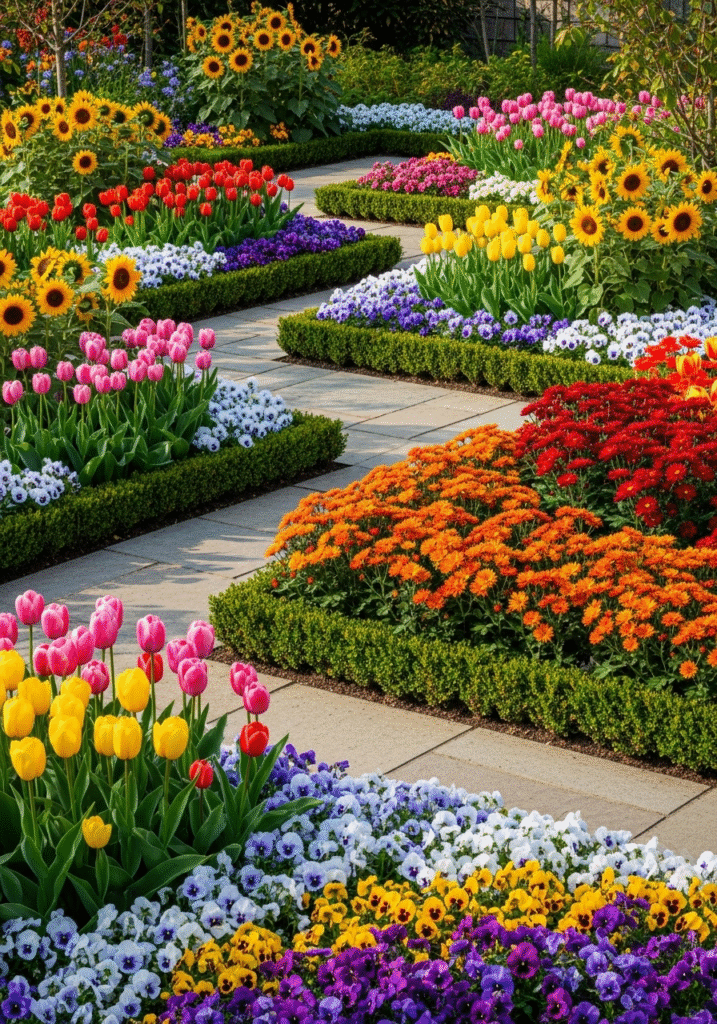
Introduction to Seasonal Flower Planting
Seasonal flower planting is a strategic approach to gardening that focuses on selecting and growing flower varieties based on their natural blooming cycles throughout the year. Rather than settling for a garden that only flourishes during a single season, this method allows gardeners to enjoy continuous bursts of color, fragrance, and life from spring through winter. By understanding the growing conditions and seasonal preferences of different plants, you can create a garden that evolves beautifully with each change in weather.
This practice not only enhances the visual appeal of your outdoor space but also supports better garden health by encouraging biodiversity and reducing the risk of pest infestations. Seasonal planting ensures that your garden remains vibrant and interesting all year long — with early-blooming bulbs like tulips in spring, heat-loving blooms like zinnias and marigolds in summer, bold chrysanthemums and pansies in fall, and cold-hardy varieties like hellebores and winter jasmine during the colder months.
Whether you’re working with a large backyard, a small balcony, or a few containers, seasonal flower planting helps you make the most of your gardening space and ensures there’s always something blooming. It’s an effective and rewarding way to create a lively, colorful environment that reflects the beauty of each season.
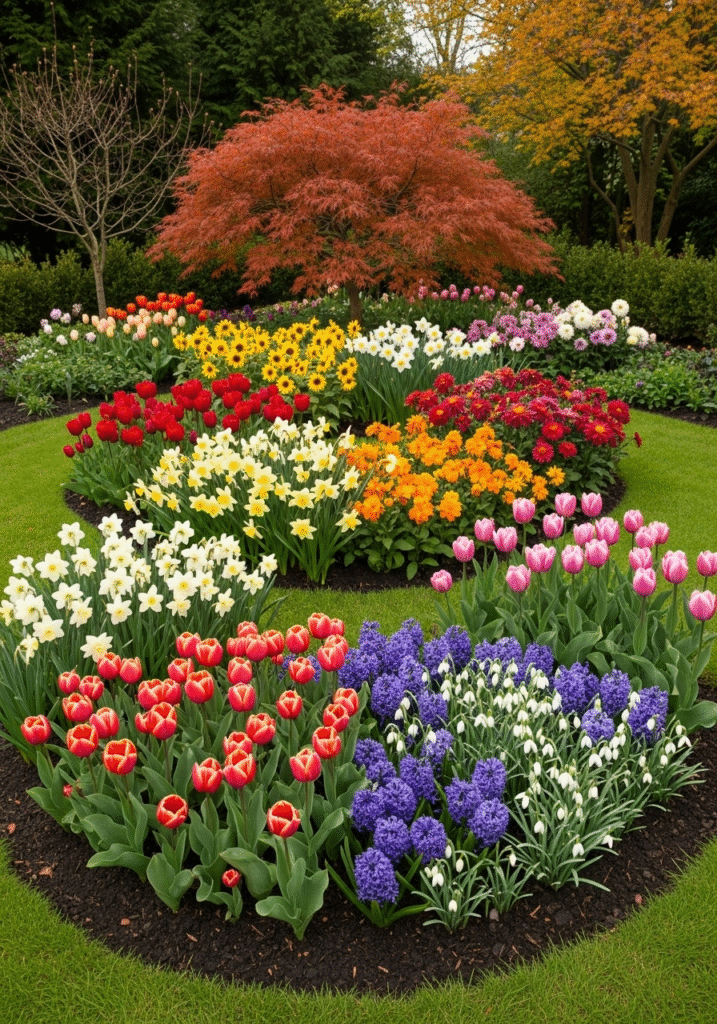
Benefits of Seasonal Planting:
Seasonal flower planting offers a wide range of benefits that go far beyond aesthetics. By carefully selecting and planting flowers according to their preferred growing seasons, you can enjoy a healthier, more productive, and more beautiful garden throughout the entire year.
One of the most appealing advantages of seasonal planting is the continuous bloom cycle. Instead of experiencing a dull or empty garden in off-seasons, your space can be bursting with fresh flowers in spring, summer, fall, and even winter. With proper planning, you can enjoy a rotating display of color and texture that keeps your garden lively and engaging no matter the month.
Another key benefit is improved pest and disease resistance. When you rotate flower species seasonally, it creates natural diversity in your garden. This makes it harder for pests and diseases to settle in and spread, resulting in healthier plants and less reliance on chemical treatments. Seasonal diversity also helps the soil recover and reduces the buildup of harmful organisms in specific areas.
Seasonal planting also allows for the efficient use of gardening space. As some flowers fade, others begin to bloom, ensuring that no part of your garden goes unused. This rotational method helps you maximize your available space and encourages consistent maintenance and engagement with your garden.
Perhaps most importantly, seasonal planting supports pollinators like bees, butterflies, and hummingbirds year-round. Different flowers attract different types of pollinators, and having something in bloom throughout the year helps sustain these essential creatures. By creating a pollinator-friendly garden that changes with the seasons, you contribute to a healthier local ecosystem and help protect declining pollinator populations.
Overall, seasonal planting is a smart, sustainable, and rewarding gardening strategy that enhances both your garden’s appearance and its environmental impact.
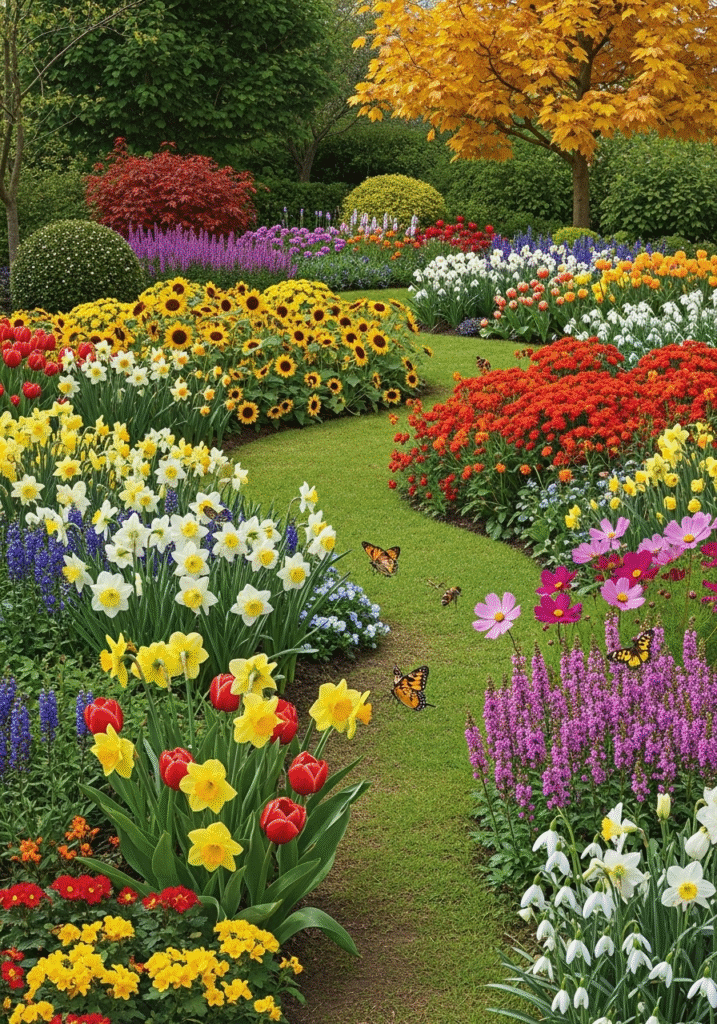
Why Seasonal Planting Matters
Seasonal planting plays a vital role in the overall health, longevity, and beauty of your garden. Each season comes with its own set of environmental conditions—ranging from temperature and sunlight to rainfall and humidity. Understanding these seasonal shifts is key to choosing flowers that can not only survive but also thrive in those conditions. By aligning your planting strategy with nature’s rhythm, you ensure your garden stays vibrant, resilient, and visually appealing all year round.
Spring, for instance, offers mild temperatures and increased daylight, making it ideal for planting bulbs and early bloomers like tulips, daffodils, and hyacinths. Summer, with its longer days and intense heat, supports sun-loving flowers like marigolds, zinnias, and petunias that can withstand warmer weather. Fall provides cooler nights and moist soil, perfect for hardy blooms such as chrysanthemums and pansies, which can add bursts of color as temperatures drop. Even winter can support blooms like hellebores and ornamental cabbages in milder climates, giving your garden life during otherwise barren months.
Choosing season-appropriate plants also improves your garden’s efficiency and sustainability. Flowers that are well-suited to the current climate need less water, fewer fertilizers, and minimal intervention to thrive. They grow stronger root systems, resist diseases better, and offer more vibrant and longer-lasting blooms. This reduces waste, lowers maintenance efforts, and supports an eco-friendly gardening approach.
Moreover, seasonal planting contributes to local biodiversity by providing nectar and shelter for birds, bees, butterflies, and other beneficial insects throughout the year. This strengthens your garden’s ecosystem while promoting natural pollination cycles.
In short, seasonal planting is not just a smart gardening practice — it’s an essential one. It helps you work with nature rather than against it, leading to healthier plants, a more dynamic garden, and a more rewarding gardening experience overall.
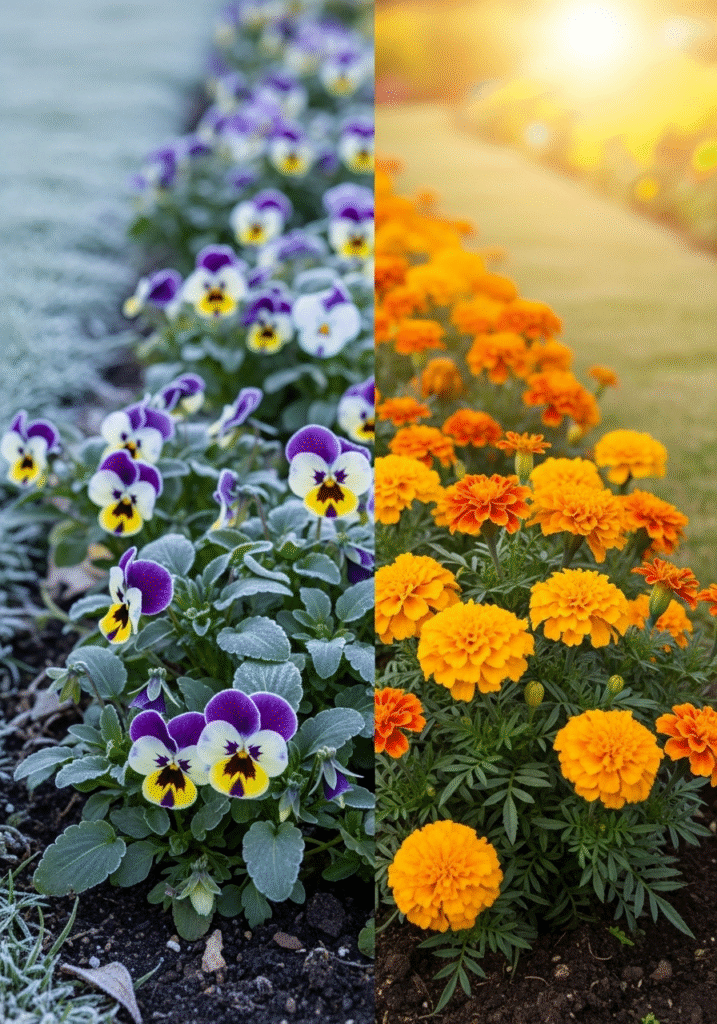
Spring Flower Planting Guide
Spring marks the awakening of the garden after the cold dormancy of winter. As temperatures gradually warm and daylight increases, it becomes the perfect time to plant a variety of cool-season annuals and hardy perennials that thrive in these fresh, mild conditions. Spring flower planting not only sets the stage for early-season color but also builds the foundation for a lush and blooming garden throughout the year.
Some of the top spring flowers to consider include:
- Tulips – A classic spring favorite, tulips are typically planted in the fall and burst into color as the ground warms in spring. They do best in full sun and require well-drained soil to prevent bulb rot. With hundreds of varieties, they’re perfect for borders, containers, or mass plantings.
- Daffodils – These cheerful yellow or white blooms are excellent for naturalizing lawns and garden beds. Like tulips, they should be planted in fall but reward you with early spring blooms. They thrive in sunny areas and need only moderate watering once established.
- Pansies – Known for their bright “faces” and wide color range, pansies are among the few flowers that can tolerate light frosts. They’re great for early spring planting and provide vibrant splashes of color when most other plants are still waking up.
- Primroses – Ideal for borders, containers, and shaded areas, primroses are hardy spring bloomers that add elegance and color to cooler garden corners. Regular watering and mulching help retain soil moisture and encourage longer blooming periods.
To make the most of spring planting, follow these expert tips:
- Prepare the soil by working in compost or well-rotted organic matter to improve texture and nutrient content. This gives new plants a strong start.
- Water thoroughly after planting to help establish roots quickly. Spring rains usually help, but newly planted flowers may need supplemental moisture.
- Mulch around plants to retain moisture, suppress weeds, and keep the soil temperature consistent as the weather shifts.
- Apply a light fertilizer suited for flowering plants. Avoid overfeeding, as excessive nitrogen can result in more foliage than flowers.
With proper planning and care, your spring garden can come to life with a vibrant display of textures, scents, and colors. Whether you’re planting in beds, borders, or containers, spring is your opportunity to lay the groundwork for a thriving and colorful garden throughout the growing season.
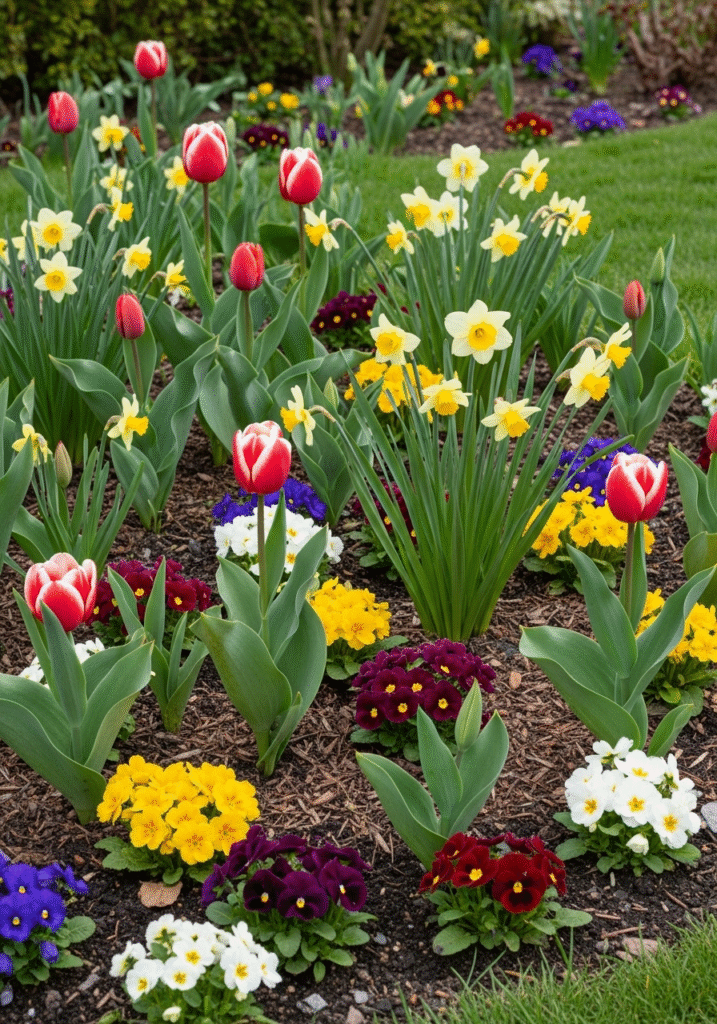
Summer Flower Planting Guide
Summer is the season of vibrant color, long sunny days, and flourishing garden landscapes. It’s the perfect time to plant flowers that not only tolerate but thrive in heat and direct sunlight. Summer flower planting focuses on hardy, sun-loving varieties that can handle high temperatures and continue blooming through the hottest months of the year. With the right choices and proper care, your garden can become a bright, pollinator-friendly paradise all summer long.
Some of the top flowers for summer planting include:
- Marigolds – These classic summer annuals are beloved for their bright orange and yellow blooms, natural pest-repelling properties, and incredible drought tolerance. Marigolds are low-maintenance and ideal for sunny borders, vegetable gardens, and container arrangements. They require full sun and only moderate watering once established.
- Zinnias – Zinnias are a must-have for summer gardens. These colorful, daisy-like flowers are excellent for borders, pots, and cutting gardens, providing long-lasting blooms in shades of pink, red, yellow, and white. They thrive in full sun, require minimal care, and bloom continuously until the first frost.
- Sunflowers – A summer favorite, sunflowers bring drama and height to the garden while attracting bees, butterflies, and birds. They grow quickly and easily in direct sunlight and are a great choice for children’s gardens due to their impressive size and cheerful appearance.
- Petunias – Available in a stunning variety of colors and patterns, petunias are perfect for hanging baskets, window boxes, and containers. They love the heat, bloom prolifically, and add a soft fragrance to patios and porches. Regular deadheading keeps them looking their best all season.
To keep your summer flowers thriving, follow these essential summer planting tips:
- Water deeply but infrequently to promote deep root systems that can access moisture during dry spells. Early morning watering is best to reduce evaporation and fungal growth.
- Apply mulch around the base of plants to help retain soil moisture, regulate soil temperature, and suppress weed growth.
- Deadhead spent blooms regularly to encourage new flower production and maintain a tidy appearance.
- Fertilize every 3–4 weeks with a balanced or bloom-boosting fertilizer to support vigorous growth and continuous flowering.
To boost the growth of your homegrown vegetables, check out the Best Fertilizers for Kitchen Garden and make your soil more productive.
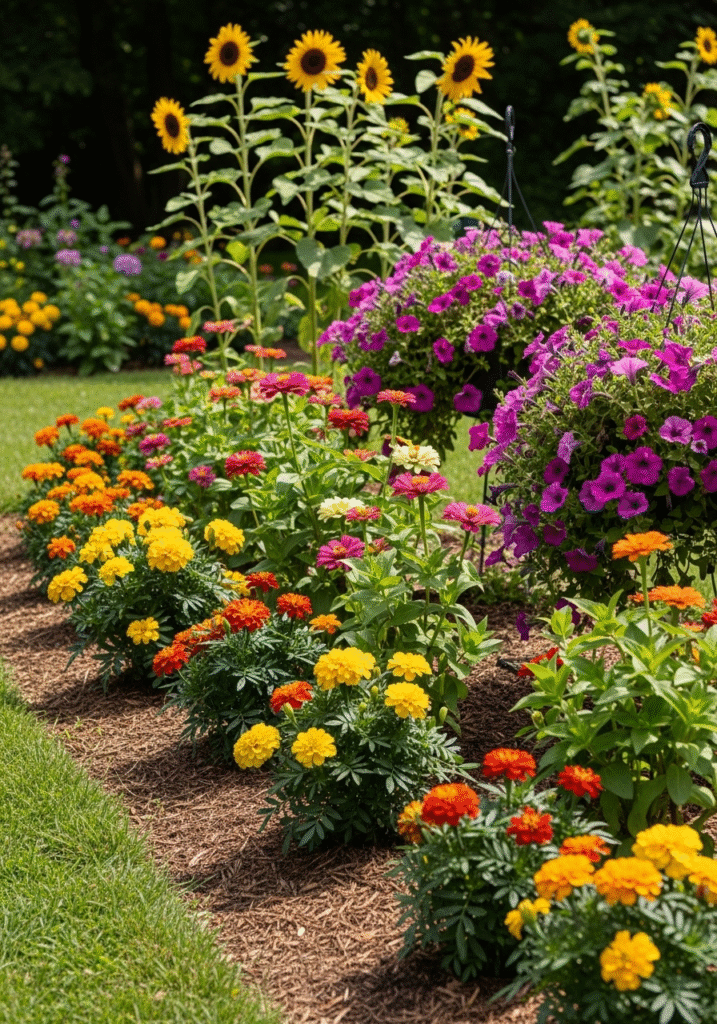
Fall Flower Planting Guide
Fall is often seen as the winding down of the growing season, but for savvy gardeners, it’s a valuable time to revitalize flower beds with blooms that love cooler temperatures. As the summer heat fades, fall becomes a transitional season that provides a second opportunity to plant vibrant annuals and resilient perennials. With proper planning, your garden can continue to shine with rich autumn colors and support essential pollinators before winter arrives.
Here are some of the top flowers to plant in fall:
- Chrysanthemums (Mums) – Known as the ultimate fall flower, chrysanthemums bloom in a variety of warm, autumnal colors such as bronze, gold, red, and purple. They thrive in full sun and well-drained soil, making them perfect for garden beds, borders, and containers. Mums also make beautiful cut flowers for fall décor.
- Asters – These daisy-like flowers bloom late in the season, often into early winter. Their bright purples, blues, and pinks not only enhance fall gardens but also attract bees and butterflies. Asters are hardy, low-maintenance, and ideal for cool-climate regions.
- Snapdragons – A cool-weather favorite, snapdragons can survive light frost and bloom through the fall when planted early enough. They add vertical interest and are perfect for both garden beds and containers, available in nearly every color.
- Calendula (Pot Marigold) – This cheerful, golden-orange flower is not only beautiful but also edible and medicinal. Calendulas bloom best in cooler weather and are known for their healing skin properties. They’re great for herb gardens, edible landscapes, and ornamental beds.
To maximize success when planting in autumn, keep these fall planting tips in mind:
- Start early—ideally in late summer through early fall—so plants can establish roots before the first hard frost.
- Refresh the soil by adding compost or organic fertilizer to replenish nutrients that summer flowers may have depleted.
- Clear out faded summer plants to make space for new fall blooms and reduce the risk of disease or pests overwintering.
- Apply mulch around plant bases to insulate the roots and protect them from sudden temperature drops or early frosts.
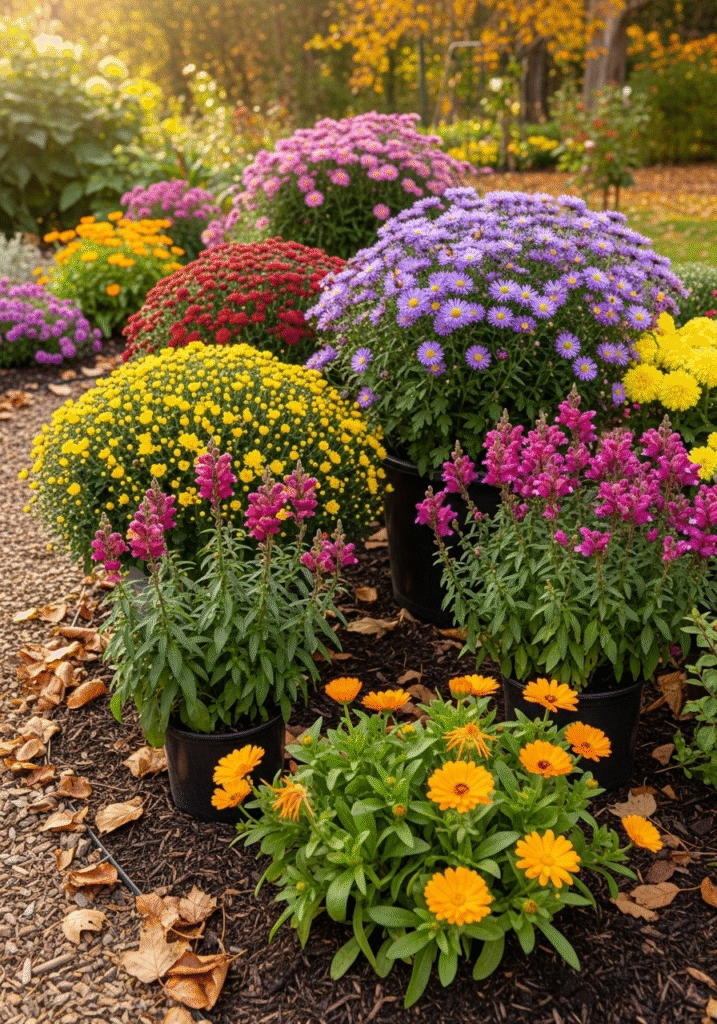
Winter Flower Planting Guide
Winter may seem like a quiet season for gardening, but with the right flower selections and a bit of planning, you can maintain a colorful and lively garden even in the coldest months. While many plants go dormant during winter, there are several hardy and frost-resistant flower varieties that not only survive but thrive in lower temperatures — especially in milder climates. Winter flower planting brings unexpected beauty to the dormant landscape and keeps your garden visually appealing year-round.
Here are some of the top winter flowers to plant:
- Pansies & Violas – These cheerful flowers are winter superstars. Despite their delicate appearance, they are cold-hardy and capable of withstanding frost and even snow. Pansies and violas provide a welcome burst of color during the bleak winter months and are ideal for both ground beds and container gardens.
- Hellebores (Lenten Rose) – Known for blooming in late winter, hellebores are elegant perennials that bring structure and beauty to the winter garden. Their evergreen foliage remains lush throughout the season, and their drooping blooms — in shades of white, pink, green, and purple — appear when little else is flowering.
- Cyclamen – These dainty, heart-shaped blooms are perfect for adding color to indoor spaces and sheltered outdoor spots during winter. While some varieties prefer to stay indoors, hardy types can survive mild outdoor winters, especially in zones with less frost. Their attractive marbled leaves and vivid flowers make them a favorite for windowsills and containers.
To succeed with winter planting, follow these key winter gardening tips:
- Select frost-resistant flower varieties that are known to thrive in cold or temperate winter climates. Look for hardy perennials and cold-tolerant annuals suited to your USDA zone.
- Ensure proper drainage in garden beds and containers to prevent root rot, a common problem in soggy, cold soil. Raised beds or sloped planting areas work well.
- Protect plants during extreme weather with garden fleece, cloches, or cold frames, especially during heavy snow or sudden deep freezes.
- Use containers for flexibility, especially in harsh climates. Container gardening allows you to move plants to sheltered areas or indoors during particularly cold snaps, giving them better survival odds.
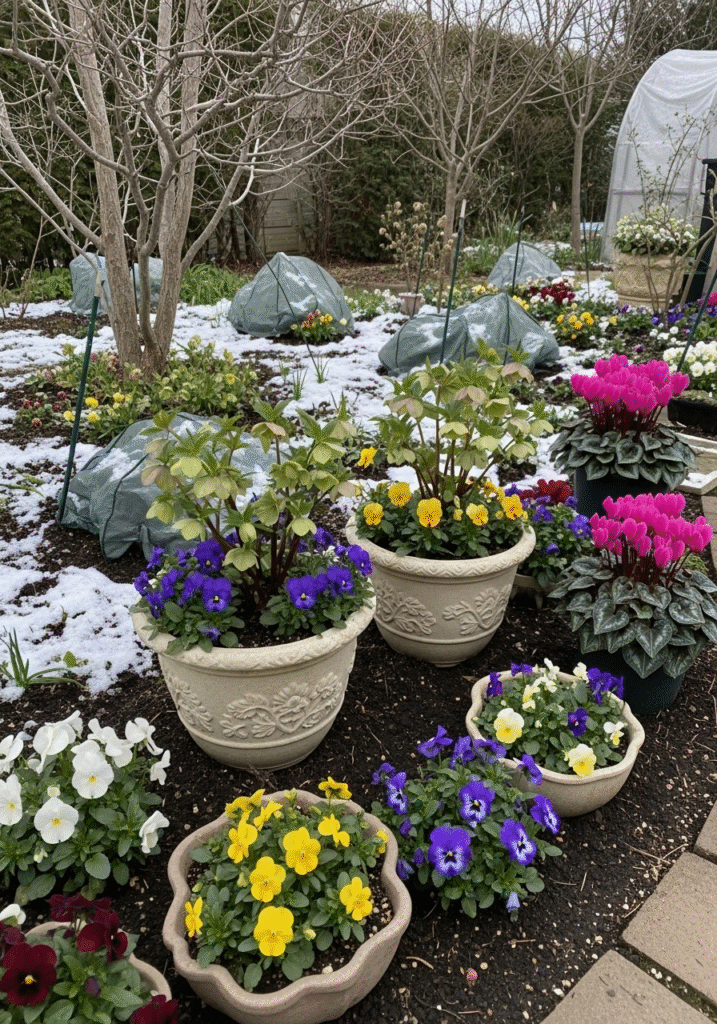
Tips for Year-Round Flower Gardening
Creating a garden that blooms beautifully throughout all four seasons may seem challenging, but with thoughtful planning and a few expert techniques, it’s entirely achievable. Year-round flower gardening is about more than just planting — it involves understanding bloom cycles, coordinating planting schedules, maintaining healthy soil, and using effective irrigation methods. These strategies work together to ensure your garden remains colorful, healthy, and thriving from winter’s frost to summer’s peak heat.
Here are several key tips to maintain a flourishing garden all year long:
- Plan Ahead – Start by sketching a seasonal layout for your garden. Divide your flower beds into sections based on bloom periods so that as one group of flowers finishes its cycle, the next begins to bloom. This proactive approach helps ensure continuous color and avoids gaps in your garden’s appearance.
- Succession Planting – Use succession planting techniques to stagger bloom times. Choose early-, mid-, and late-season varieties within each growing period. For example, in spring, plant early tulips, mid-season daffodils, and late-blooming alliums for a wave of color that evolves naturally.
- Combine Perennials and Annuals – A balanced garden includes both perennials, which return year after year, and annuals, which offer bold color and flexibility each season. Perennials form the foundation of your garden, while annuals fill in gaps and allow you to experiment with new colors and patterns each year.
- Maintain Healthy Soil – Soil health is essential for year-round gardening success. Regularly amend your soil with compost, aged manure, or organic fertilizers to replenish nutrients and improve drainage. Conduct occasional soil tests to monitor pH levels and nutrient content, adjusting as needed for optimal growth.
- Install an Efficient Irrigation System – Watering consistency is crucial, especially during peak summer heat or dry winter spells. Consider installing a drip irrigation system or soaker hoses to deliver water directly to the roots, reduce evaporation, and avoid wetting foliage, which can lead to fungal issues.
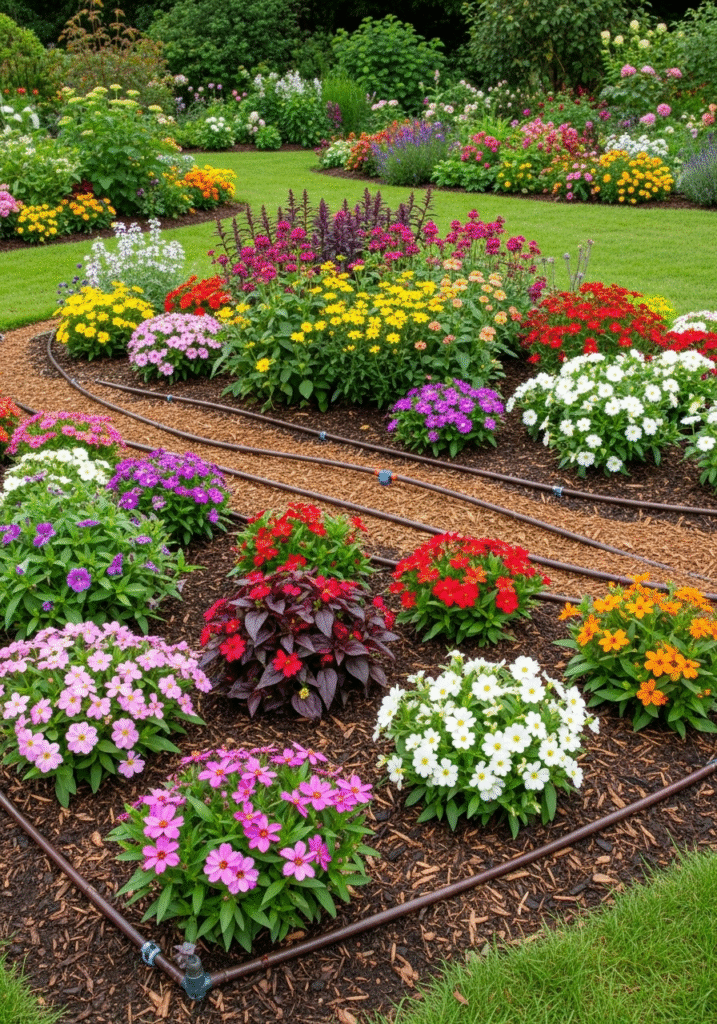
Flower Gardening Mistakes to Avoid
Even the most well-intentioned gardeners can run into trouble if they overlook a few critical details. Flower gardening may appear simple, but certain missteps—especially when it comes to seasonal planting—can result in disappointing blooms, unhealthy plants, and wasted effort. By understanding and avoiding these common flower gardening mistakes, you can give your garden the best chance to thrive year-round.
Here are some of the most common mistakes to avoid in seasonal flower gardening:
- Planting Out of Season – Timing is everything in gardening. One of the biggest mistakes is planting flowers at the wrong time of year. Always check the appropriate planting and blooming periods for each variety based on your USDA hardiness zone. For example, tulip bulbs should be planted in fall, not spring, and summer flowers like zinnias need warm soil to germinate. Planting too early or too late can result in poor germination or stunted growth.
- Overwatering or Underwatering – Water is essential, but too much or too little can be harmful. Overwatering can cause root rot, while underwatering stresses plants and reduces blooming. Understand the specific moisture needs of each flower type—some, like marigolds, prefer drier soil, while others, like primroses, need more consistent moisture. A drip irrigation system or soil moisture meter can help maintain balance.
- Ignoring Sunlight Requirements – All plants have different sunlight needs, and ignoring these can severely impact flower health. Placing shade-loving flowers like impatiens in full sun can cause them to wilt or burn, while sun-loving varieties like petunias won’t bloom well in shady areas. Always check the plant tag or seed packet to understand if the flower prefers full sun, partial shade, or full shade.
- Crowded Planting – While it’s tempting to fill every inch of garden space, overcrowding leads to poor air circulation, which increases the risk of fungal diseases and pest infestations. It also forces plants to compete for nutrients, water, and light. Follow spacing guidelines for each plant to ensure healthy growth and allow room for air and sunlight to reach all parts of the garden.
- Skipping Fertilizer – Many gardeners overlook the importance of regular feeding. While some perennials can thrive in lean soil, most flowering plants—especially fast-growing annuals—need nutrient-rich soil to produce vibrant, long-lasting blooms. Choose a balanced or bloom-boosting fertilizer and apply it according to the plant’s needs and growth stage.
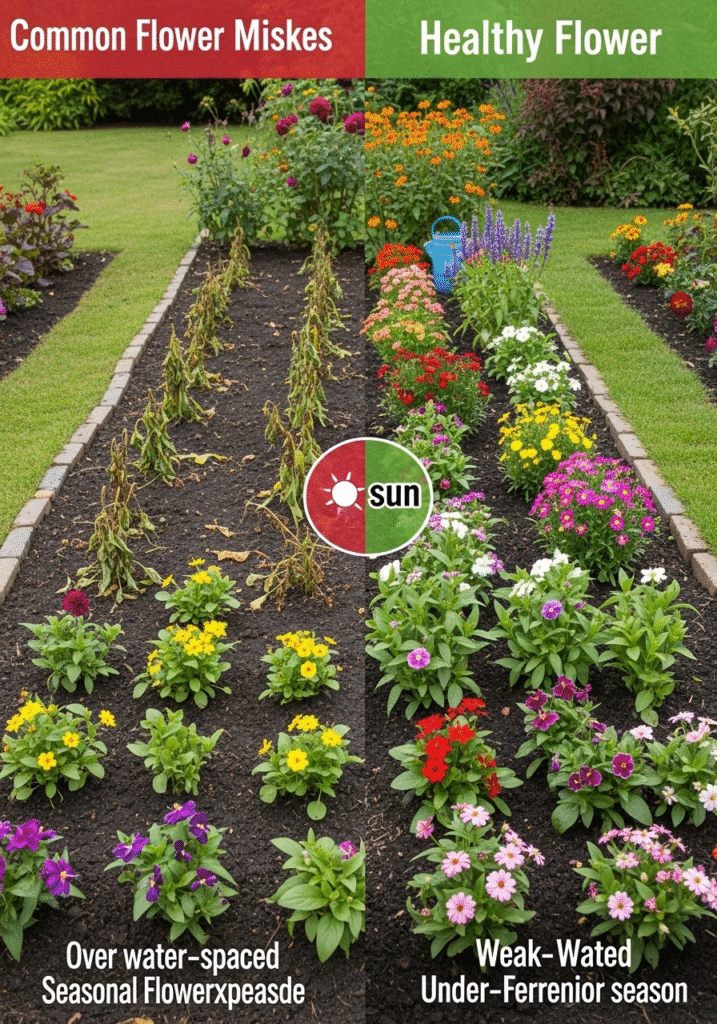
Final Thoughts
Creating a flower garden that transforms with the seasons is both an art and a science—one that rewards the gardener with constant color, life, and joy throughout the year. By learning how different flowers respond to seasonal changes and implementing thoughtful planting strategies, anyone can achieve a garden that blooms beautifully month after month.
The journey begins with understanding your local climate and growing zones, then choosing flower varieties that are naturally suited to each season. Spring welcomes fresh beginnings with tulips and daffodils, summer brings bold color with zinnias and marigolds, fall offers rich texture with mums and asters, and winter surprises with resilient blooms like pansies and hellebores. With proper planning and seasonal rotation, your garden can remain vibrant even during the coldest or hottest months.
But beyond choosing the right flowers, successful seasonal gardening depends on timing, soil preparation, watering routines, and ongoing care. Succession planting, proper spacing, soil health, and pest management all play critical roles in maintaining a lush and healthy flower garden across the year.
Most importantly, flower gardening is a joyful, ever-evolving process. It encourages you to stay connected with nature, observe subtle changes in the environment, and take pride in something that grows through your care and attention. Whether you have a small balcony, a backyard bed, or a sprawling garden space, each season brings new opportunities to learn, grow, and beautify your surroundings.
Final takeaway: With the right knowledge, timing, and a little love, your flower garden can become a year-round showcase of seasonal beauty—an ever-changing masterpiece that brings happiness to you and life to your outdoor space.
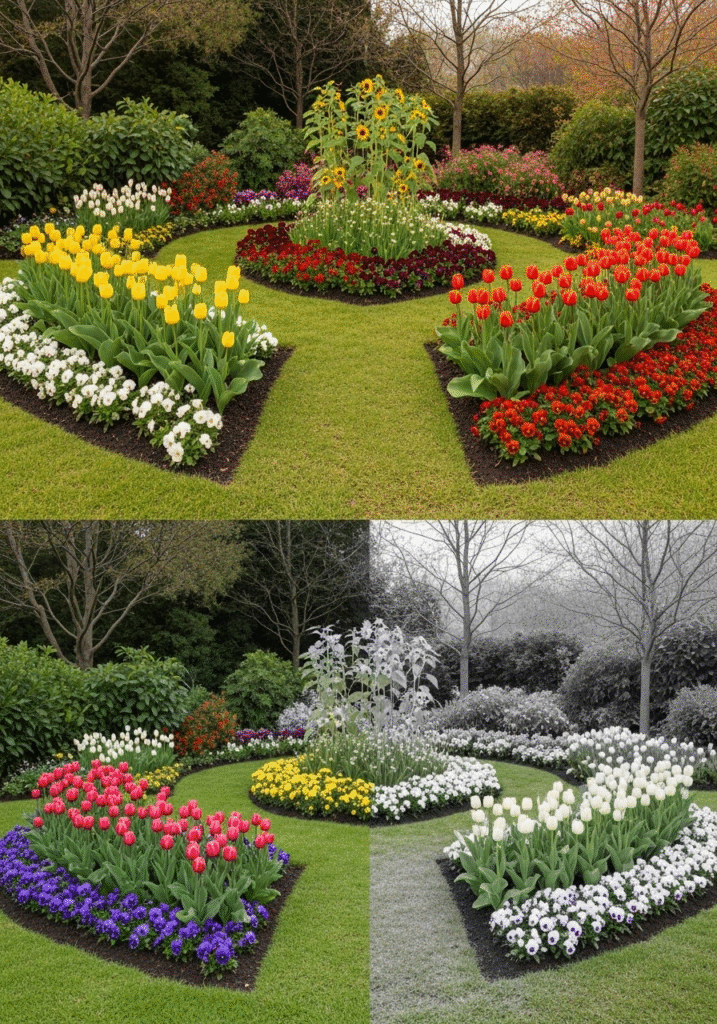

Pingback: Best Fertilizers for Kitchen Garden: Organic & Chemical Options for Healthy Growth - pademoluxury.com